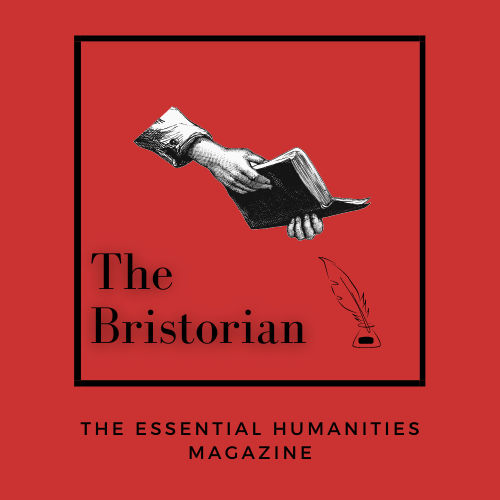Spaces and Places of Bristol’s LGBTQ+ History
By Stella Rogers
Bristol has an incredibly vibrant LGBTQ+ scene. From clubs like OMG to groups like the Bristol Butch Bar and Misscoteque, there are many spaces for members of the community to connect and flourish. These spaces provide a much-needed outlet for people who may not otherwise have such a space safe to explore themselves and their identities.
However, there are some more obscure landmarks that have a place in Bristol’s LGBTQ+ history; spaces that we may pass on a daily basis. These places have histories that have had to be kept hidden, due to past prejudices and oppressive policy.
Bristol Royal Infirmary
Located in the city centre, Bristol Royal Infirmary (BRI) wouldn’t be an obvious top contender for one of Bristol’s LGBTQ+ landmarks. Yet, this hospital was where Laurence Michael Dillon, a transgender man, underwent the first successful, recorded gender reassignment surgery.
Born in 1915, Dillon began medically transitioning when he moved to Bristol in 1939. Bristol was home to George Foss, who was studying the effects of testosterone on treating excessive menstrual bleeding. Foss provided Dillon with the hormones he needed to be socially recognised as a man. This was during an era where trans people could lose their jobs, homes and lives if found out, so secrecy and ‘passing’ were paramount. This was evident in the fact that Dillon was forced to find a new job after a psychiatrist outed him to his work colleagues.
Dillon would later undergo around 13 surgeries from 1946 to 1949, including a double mastectomy and the first successful recorded phalloplasty. All these surgeries occurred in secret at the BRI, performed by Harold Gillies.
Laurence Michael Dillon before any medical transition and after.
The BRI is a major historic landmark for the LGBTQ+ community. Dillon and the work of people in the BRI took the first tentative steps on the path of trans healthcare, ultimately allowing people to live more authentic lives.
The Radnor Rooms
Now a wedding venue, The Radnor Rooms (previously named the Radnor Hotel) was a safe haven for its LGBTQ+ patrons. Situated on St Nicholas Street, the pub opened in the 1920s. From the 1940s it was a known LGBTQ+ venue, but it is unclear exactly when the Radnor hotel gained this reputation, as no documents could be kept or publicised until the late ‘60s.
Oppressive policies may make it difficult to ascertain the pub’s exact history but eyewitness accounts from frequent patrons mean that we know that, once night fell, the Radnor Hotel came alive. It became a bustling safe space for drag queens, young queer people visiting from Weston-Super-Mare and gay American soldiers during World War 2. It is rumoured that these soldiers actually introduced the term ‘gay’ into the pub’s popular vernacular; ‘queer’ was the term most used before-hand.
By 1975, the pub changed hands, and the owner decided he preferred the patrons that came in the day. These were mostly businessmen and stockbrokers who weren’t openly LGBTQ+. Over time, the night-time regulars found other venues to enjoy a safe space, as, unfortunately, the new landlord wasn’t open to having his establishment being branded as a ‘gay bar’.
The Moulin Rouge
Now a row of unassuming houses at the top of Whiteladies road, in the 1970s The Moulin Rouge (also known as the ‘Moulie’) was one of the largest gay clubs in the UK. Once an old swimming pool, it had been refurbished into a massive dance floor.
The club received many complaints from residents who were distraught at the idea of having a gay club in their midst. Despite backlash, the club attracted people from far and wide, with 500 regularly visiting on Saturday nights.
Due to the bar’s licencing, patrons would receive a plate of old salad with their drinks and were instructed not to eat it. After they had finished, the salad would be passed on to the next customer. A similar tactic was used at the famous Stonewall Inn in New York City, as well as other gay clubs of the era. This was because alcohol could only legally be served with food.
By the mid-70s, customers began drifting to new gay clubs in the city’s centre, and the managers of the club faced a long, tumultuous battle against discriminatory police and residents. Due to hateful pressure, the ‘Moulie’ lost its licence 1976. The managers continued to fight but the ‘Moulie’ closed in 1977. The venue was demolished, becoming housing in 1986.
Overall, Bristol has a rich LGBTQ+ history. It is unfortunate that these histories are often buried, with historic prejudice forcing spaces that welcomed LGBTQ+ individuals into secrecy. Knowing these histories enriches our appreciation of Bristol as an LGBTQ+ friendly city and allows us to pay homage to those who paved the way for the current queer world. Without people like Laurence Michael Dillon and venues like the ‘Moulie’, perhaps the Bristol we see today would not be the same vibrant city that embraces diversity and change.


